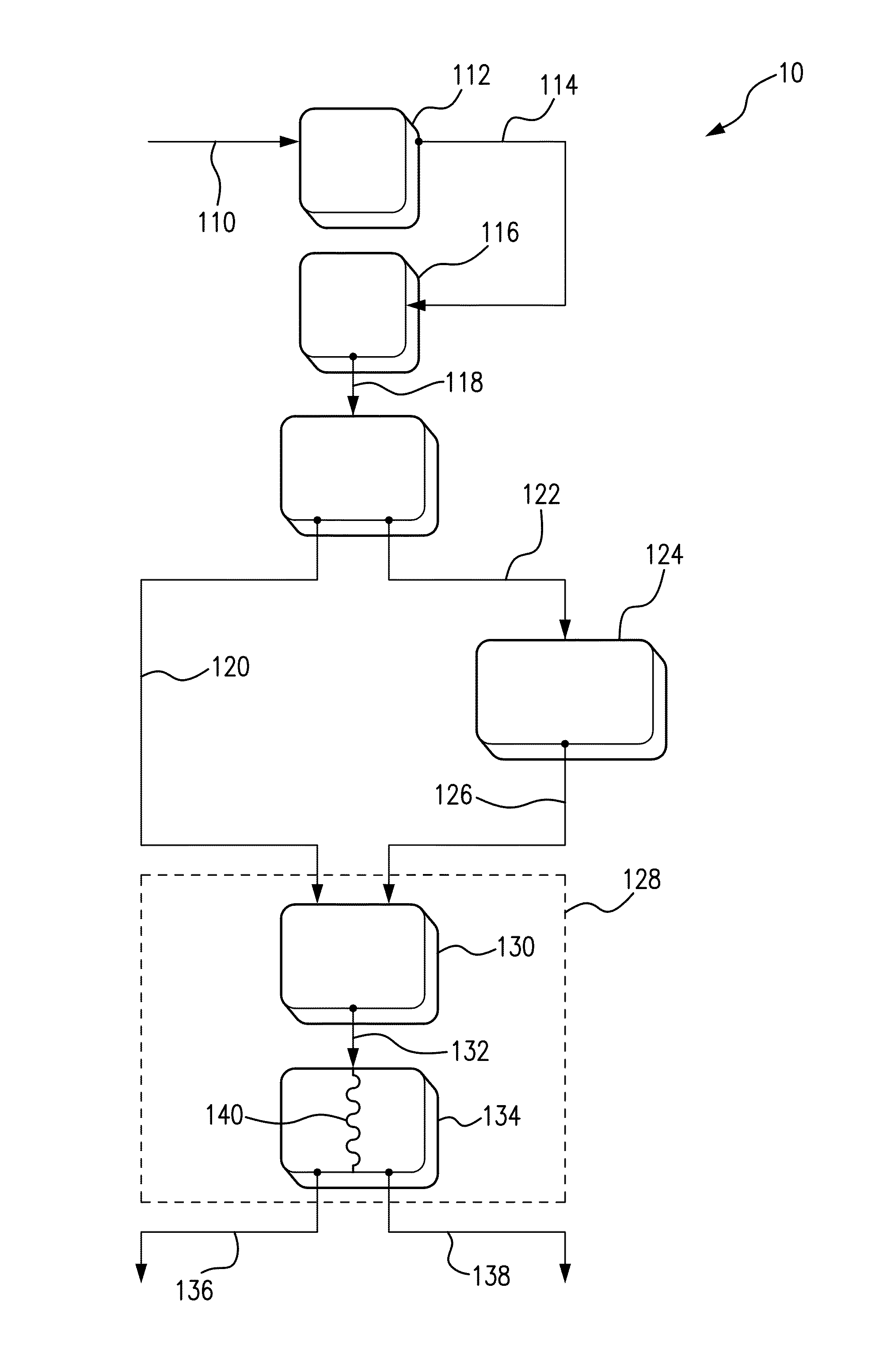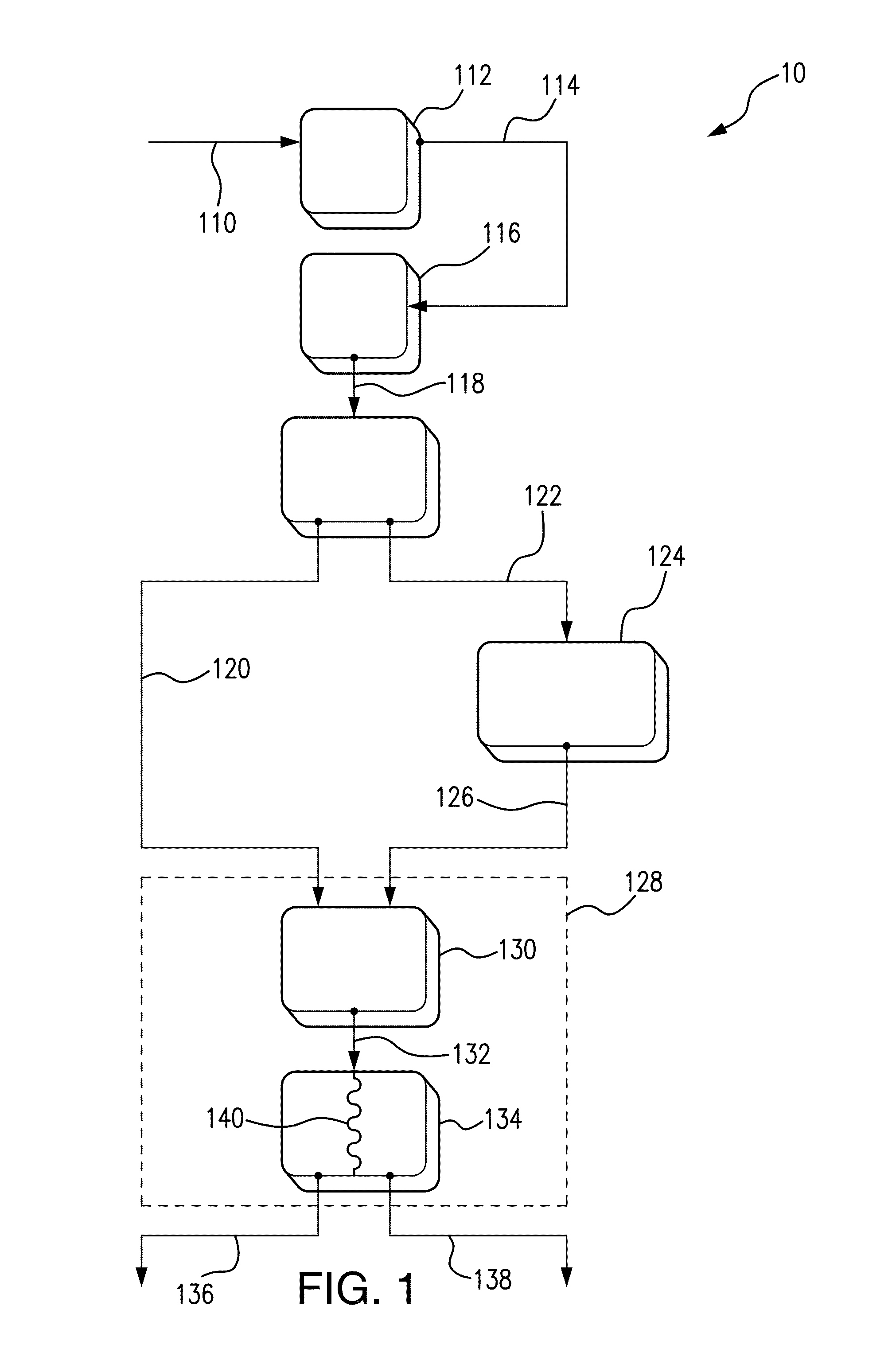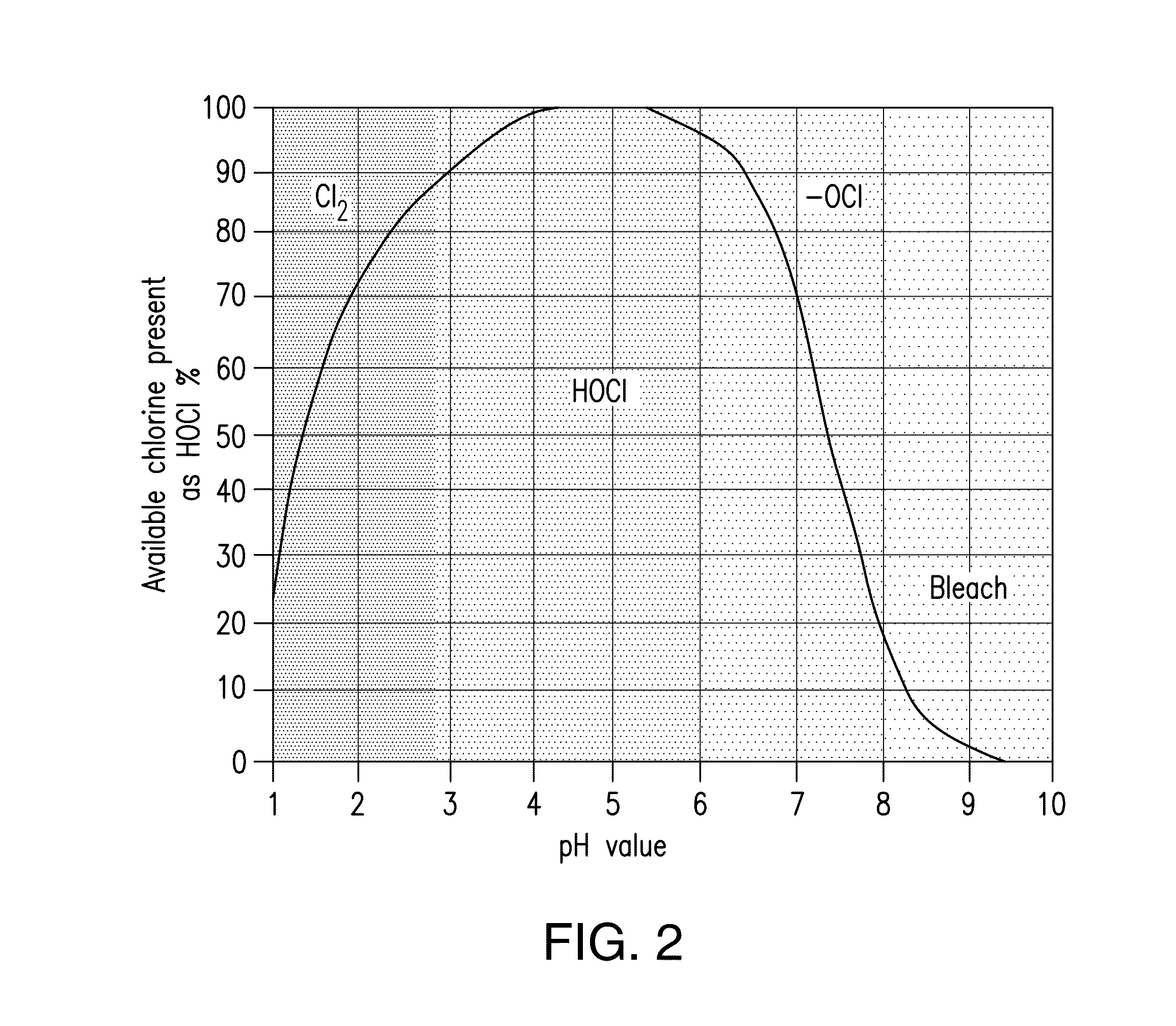Method for Producing Shelf Stable Hypochlorous Acid Solutions
a production method and technology of hypochlorous acid, applied in the field of improved production methods of hypochlorous acid, can solve the problems of long-standing considerations of limited shelf life of hypochlorous acid, none of the features and advantages presented in the instant disclosure, and achieve the effect of prolonging shelf li
- Summary
- Abstract
- Description
- Claims
- Application Information
AI Technical Summary
Benefits of technology
Problems solved by technology
Method used
Image
Examples
example 1
First Embodiment Production Scheme of Extended Life Hypochlorous Acid
[0076]FIG. 1 shows a process flow diagram for a first embodiment production system 10 for improved shelf life hypochlorous acid. In the production system 10, tap water 110 flows to the water softener system 112 (General Electric Model GXSH40V 00) where calcium (Ca) and magnesium (Mg) ions are removed. A softened water stream 114 emerges from the water softener 112 and enters a reverse osmosis system (US water Systems Model APRO 5050P) 116. Softened, purified water 118 flows from the reverse osmosis system 116 and is separated into a first stream 120 and a second stream 122. Second stream 122 is combined with 99.9% pure food grade salt 124 (Morton Culinox 999) and emerges as a 26% saturated salt solution 126. While pure food grade salt was used, it is anticipated that favorable results would be achieved using salt having purity of about 99% or greater. The first stream 120 of purified water and the 26% saturated sal...
example 2
Effect of Container Material on Shelf Life of Hypochlorous Acid
[0092]Hypochlorous acid solutions at various initial pH levels were stored for 4 to 6 months in various plastic container materials at room temperature and the FAC levels were monitored over time. Each bottle was rinsed with the hypochlorous acid solution before being filled for storage.
[0093]The plastic materials tested are shown in Table 3.
TABLE 3Tested Packaging materialsMaterialPackage typeNatural high density polyethylene32 oz Bottle(HDPE)White polyethylene terephthalate (PET)32 oz BottleCKS Packaging, Inc. Model 6063Filled with 2-3% TiO20.015″ minimum wall thicknessAmber PET32 oz BottleEthylene vinyl alcohol copolymerBag in box(EVOH)Polyamide and polyethyleneBag in box3 layer laminate (Nylon / PE)Scholle product 20005 28μ PE15.2μ Biaxially oriented Nylon63.5μ PEPolyamide and polyethyleneBag in a box3 layer laminate (Nylon / PE)D.S. Plastics RaPak25.4μ PE15.2μ Nylon50.8μ PELow density polyethylene (LDPE)Bag in box
[0094...
example 3
Effect of Sunlight Exposure on Storage of Hypochlorous Acid in High Density Polyethylene Bottle
[0097]A 3.5 pH solution of hypochlorous acid was made and stored in a high density polyethylene (HDPE) bottle outside, in full sunlight, for 15 days. The results, in terms of FAC and percent drop in FAC are shown in Table 4.
TABLE 4Change in FAC of 3.5 pH hypochlorous acid exposed to sunlightoutside in HDPE bottleFACStorage time (days)Temperature (° F.)(ppm)% drop FAC071112.50.0370106.55.344299.511.6541104.07.6650102.58.9664100.011.173999.012.01045100.011.1123879.029.8174561.045.8
[0098]At the temperatures tested, the 3.5 pH hypochlorous acid solution exhibited a 45% drop in FAC after 17 days, showing that the HDPE bottle was not a suitable storage container for hypochlorous acid exposed to sunlight.
PUM
| Property | Measurement | Unit |
|---|---|---|
| Fraction | aaaaa | aaaaa |
| Fraction | aaaaa | aaaaa |
| Fraction | aaaaa | aaaaa |
Abstract
Description
Claims
Application Information
 Login to View More
Login to View More - R&D
- Intellectual Property
- Life Sciences
- Materials
- Tech Scout
- Unparalleled Data Quality
- Higher Quality Content
- 60% Fewer Hallucinations
Browse by: Latest US Patents, China's latest patents, Technical Efficacy Thesaurus, Application Domain, Technology Topic, Popular Technical Reports.
© 2025 PatSnap. All rights reserved.Legal|Privacy policy|Modern Slavery Act Transparency Statement|Sitemap|About US| Contact US: help@patsnap.com



